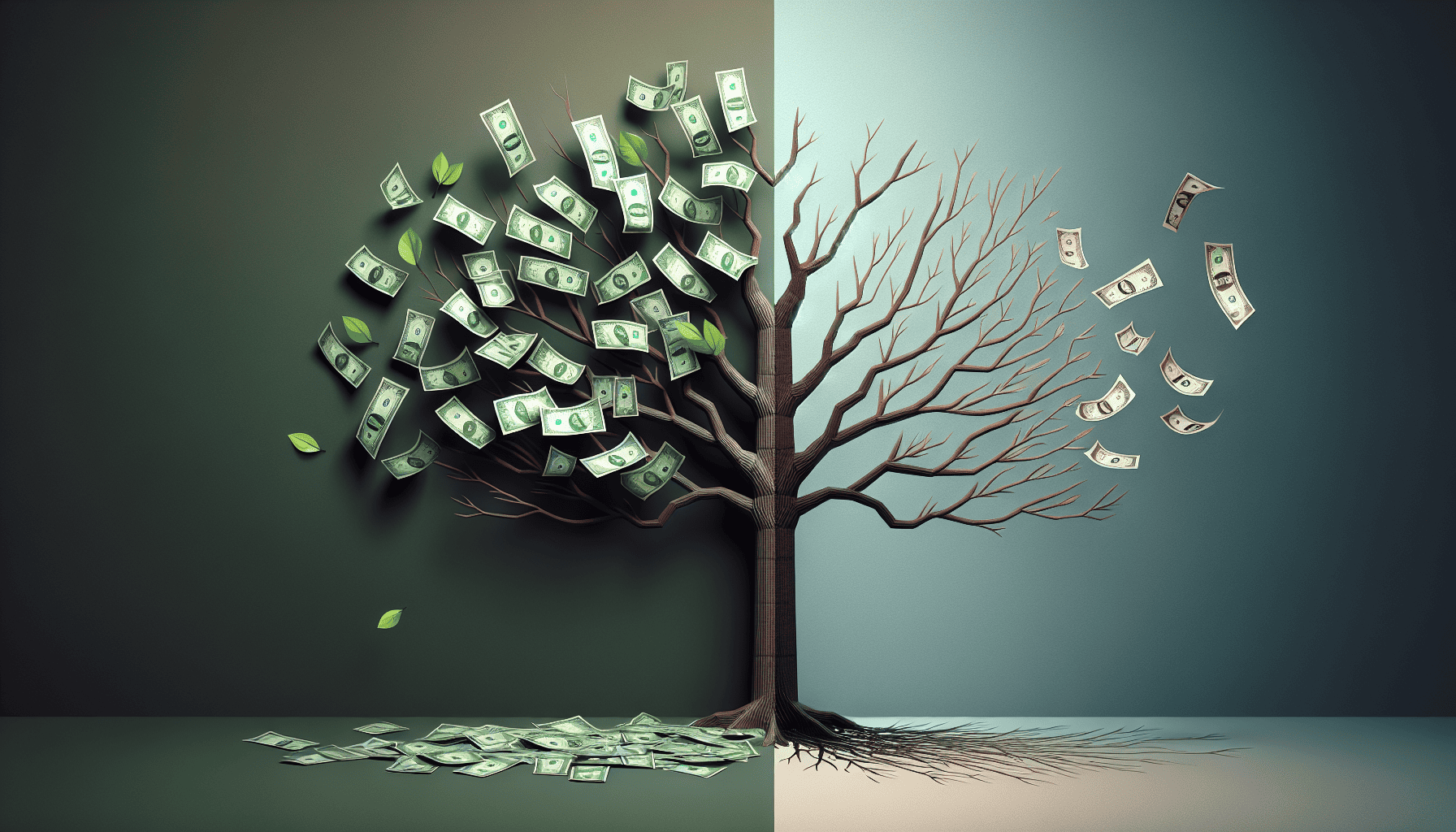Unlocking Financial Insights: Consumer Confidence Index and Spending Behavior Exposed

Understanding Economic Indicators
Economic indicators are critical tools that provide insights into the health and direction of the economy. They are extensively used by investors, policymakers, and businesses to make informed decisions. By understanding these indicators, beginner investors can better navigate the financial markets and anticipate market movements.
The Role of Consumer Confidence
Consumer confidence, quantified by the Consumer Confidence Index (CCI), reflects the degree of optimism consumers feel about the overall state of the economy and their personal financial situation. The CCI, published by the Conference Board, measures the level of consumer confidence in current economic conditions and future expectations (Investopedia). When consumers are confident, they are more likely to spend money, which fuels economic growth and can lead to increased investments in various sectors, particularly the consumer discretionary sector. Consequently, understanding consumer confidence and spending behavior is crucial for investors, as optimism can significantly impact the performance of companies within this sector (Investopedia).
Types of Economic Indicators
Economic indicators can be broadly categorized into three types: leading, coincident, and lagging indicators.
- Leading indicators are used to predict future economic activity. They include measures such as the CCI, business confidence and investment surveys, housing market indicators, and pmi: manufacturing and services sector insights.
- Coincident indicators change simultaneously with the economy, providing information about the current state of the economy. Examples are GDP, retail sales data, and the personal income and outlays report.
- Lagging indicators offer insights into past economic performances and include measures such as unemployment figures, government budget deficits, and inflation rates.
| Indicator Type | Examples |
|---|---|
| Leading | CCI, PMI, Housing Market Indicators |
| Coincident | GDP, Retail Sales Data, Personal Income |
| Lagging | Unemployment Figures, Inflation Rates, Government Budget Deficits |
Each type of indicator serves a different purpose and, when combined, they provide a comprehensive picture of economic health. For instance, while the CCI can signal upcoming shifts in consumer behavior, lagging indicators like inflation rates and financial markets can confirm if those shifts have had the expected impact on the economy.
Investors, especially those new to the investment world, should pay close attention to these indicators to make informed decisions about when and where to invest. By tracking these indicators, including the consumer confidence index and spending behavior, investors can align their strategies with the ebb and flow of economic cycles.
Consumer Confidence Index Explained
The Consumer Confidence Index (CCI) is a vital barometer for gauging the overall health of the economy and predicting consumer behavior. Understanding the CCI is essential for beginner investors who wish to gain insights into economic indicators and their impact on financial markets.
Measuring Consumer Sentiments
The CCI is an assessment of how optimistic or pessimistic consumers are regarding their expected financial situation. This index, published by the Conference Board, evaluates consumer confidence in current economic conditions and their expectations for the future. The CCI is derived from a monthly survey of over 5,000 U.S. households, which asks respondents to rate the current business and employment conditions and their expectations for the next six months (Investopedia).
The index is then calculated based on the respondents’ assessments of the following:
- Current business conditions
- Business conditions for the next six months
- Current employment conditions
- Employment conditions for the next six months
- Total family income for the next six months
The responses to these questions are compiled into the two components of the CCI:
- Present Situation Index — the level of consumers’ confidence in the economy now
- Expectations Index — the level of consumers’ confidence in the economy six months from now
The data is then statistically adjusted to account for seasonal variations and is presented relative to a baseline year, which is typically given a value of 100.
CCI and the Economy
Consumer confidence, as measured by the CCI, is a key indicator of the economy’s performance. When confidence levels are high, consumers are more likely to spend money, which in turn drives economic growth. Conversely, when confidence levels are low, consumers tend to save more and reduce their spending, which can slow down the economy (Investopedia).
In the broader context of economic indicators, the CCI is considered a Leading Economic Indicator. This means it is used to predict future economic activity and spending patterns, making it a valuable tool for investors and policymakers (The Conference Board).
For instance, a rising CCI may suggest that consumers will increase their spending on goods and services, potentially boosting retail sales and the performance of companies in the consumer discretionary sector. This sector includes industries such as automotive, housing, entertainment, and retail, all of which are sensitive to changes in consumer spending habits.
Understanding the CCI and its implications on the economy can also guide investors as they consider various investment opportunities within different sectors, such as housing market indicators and trends and retail sales data and market sentiment. Moreover, the CCI is often analyzed alongside other financial and economic reports, including inflation rates and financial markets, unemployment figures and economic health, and consumer price index (CPI) explained, to provide a comprehensive picture of the current economic landscape.
Impact on Spending Behavior
Analyzing the influence of the consumer confidence index (CCI) on spending behavior is vital for investors. It provides insights into the economic health of a nation and the propensity of consumers to make purchases. This section examines how consumer sentiments reflected in the CCI affect spending habits and delves into the consumer discretionary sector’s response to these trends.
How Confidence Influences Spending
Consumer confidence is a key economic indicator that gauges the overall sentiment of consumers towards the economy and their financial situation. When confidence levels are high, individuals tend to spend more, particularly on non-essential items and services, fueling economic growth. Conversely, low consumer confidence can lead to reduced spending, which in turn can slow down economic activity.
| Confidence Level | Spending Behavior |
|---|---|
| High | Increased spending on non-essentials |
| Low | Decreased overall spending |
Factors influencing spending behavior include economic conditions, personal finances, inflation, unemployment rates, and the CCI itself. For instance, favorable inflation rates and financial markets can boost consumer confidence, leading to increased spending. On the other hand, concerning unemployment figures and economic health can diminish consumer confidence and spending.
Consumer Discretionary Sector Analysis
The Consumer Discretionary sector thrives on the purchase of goods and services deemed non-essential, including automotive, apparel, entertainment, and household goods. As reported by Investopedia, this sector is particularly sensitive to changes in consumer confidence, as a high CCI indicates that consumers are more willing to spend on discretionary items.
| Sector | Sensitivity to CCI |
|---|---|
| Consumer Discretionary | High |
| Staples | Low |
Consumer confidence reports can significantly sway the stock prices of companies within the consumer discretionary sector. Investors keeping a close eye on CCI can gauge potential shifts in consumer spending patterns, offering them a strategic advantage (Investopedia).
For smaller businesses in sectors like retail, hospitality, and leisure, a decline in consumer confidence can have a pronounced impact, as these industries rely heavily on consumer demand to drive sales and profitability. Businesses that are adept at interpreting the CCI can adjust their strategies accordingly to either capitalize on increased spending during times of high consumer confidence or brace for reduced revenue during periods of low confidence (LinkedIn).
Investors and business owners alike must consider the CCI when making financial decisions, as it provides a snapshot of potential future spending patterns. By understanding and responding to the nuances of consumer confidence, stakeholders can better navigate the complex landscape of the consumer discretionary sector.
Interpreting the CCI
Interpreting the Consumer Confidence Index (CCI) is vital for beginner investors looking to comprehend the underlying currents of financial markets. The CCI is a trusted barometer of consumer sentiment towards economic conditions, both present and future, and can significantly influence spending behavior.
Reading the Consumer Confidence Reports
Consumer Confidence Reports, published by the Conference Board, provide insights into the level of consumer confidence in economic conditions. They reflect the public’s perception of the economy’s health and their own financial situation, which can predict their willingness to spend or save. As such, these reports are essential reading for investors, as they can signal shifts in consumer behavior that may affect market dynamics.
When analyzing these reports, look for trends in the data rather than focusing on a single month’s figures. An upward trend suggests growing consumer optimism, which can lead to increased spending, while a downward trend may indicate a more conservative approach to spending. It’s also helpful to consider the context, such as inflation rates and financial markets, unemployment figures and economic health, and other economic indicators like the consumer price index (CPI) explained.
Predicting Market Trends
The ability to anticipate market trends by interpreting the CCI can be a valuable skill for investors. A strong consumer confidence report often impacts stock prices within the consumer discretionary sector, as this sector is particularly sensitive to changes in consumer spending patterns (Investopedia).
Investors can use the CCI as one of several leading economic indicators to forecast future economic trends and consumer spending patterns (The Conference Board). By understanding the implications of the CCI, investors can make informed decisions regarding which industries or sectors are poised for growth or decline. For instance, a high CCI could indicate increased spending in luxury goods, travel, and entertainment, while a low CCI might suggest a downturn in these discretionary expenditures.
Additionally, the CCI’s predictive power extends to other areas of economic importance. It can provide insights into the potential performance of the housing market indicators and trends, the business confidence and investment surveys, and even the personal income and outlays report. By combining the CCI with other indicators such as pmi: manufacturing and services sector insights or non-farm payrolls and labor market trends, investors can form a more comprehensive view of the economic landscape.
Understanding how to read and predict market trends using the Consumer Confidence Index and spending behavior is a cornerstone of financial literacy for new investors. It enables them to navigate the complexities of the financial markets with greater confidence and formulate strategies that align with current economic sentiments.
Factors Influencing Consumer Confidence
The Consumer Confidence Index (CCI) plays a pivotal role in gauging the economic health of a country by measuring the optimism or pessimism of consumers concerning their financial situation and the state of the economy. Various elements can sway this sentiment, impacting not only spending behaviors but also broader market conditions.
Economic Conditions and CCI
Consumer confidence is closely tied to the current economic landscape. Positive economic news often leads to an uptick in consumer confidence as individuals feel more secure about their financial prospects. Key indicators that can bolster the CCI include:
- Strong Economic Growth: Indicative of a thriving economy, often reflected in Gross Domestic Product (GDP) figures, which when positive, can elevate consumer spirits. Understanding GDP and its market impact
- Low Unemployment Rates: A low level of unemployment suggests that people have jobs and a steady income, which can enhance consumer confidence. Unemployment figures and economic health
- Stable Inflation Levels: When inflation rates are low and stable, consumers’ purchasing power remains steady, positively affecting the CCI. Inflation rates and financial markets
- Healthy Housing Market: Robust housing market indicators can give consumers the confidence to make larger investments. Housing market indicators and trends
Conversely, negative economic indicators such as rising inflation, job losses, and economic uncertainties can diminish consumer confidence, which in turn can lead to reduced spending and economic stagnation (Investopedia).
External Factors and CCI
Aside from internal economic conditions, several external influences can impact the CCI:
- Geopolitical Events: Issues like political unrest, international conflicts, or trade disputes can create uncertainty, negatively influencing consumer confidence.
- Government Policies: Decisions on issues such as the debt ceiling, taxation, or interest rates can have immediate effects on the CCI. Interest rate decisions by central banks
- Global Economic Health: The interconnected nature of global markets means that economic indicators from key countries can affect consumer confidence worldwide. Global economic indicators and interconnectivity
- Public Health Crises: Events like pandemics can greatly disrupt economic activity and consumer confidence.
Understanding the myriad of factors that can sway the CCI is crucial for investors, businesses, and policymakers. It can help predict consumer behavior, prepare for market shifts, and make informed decisions about future financial strategies.
The CCI and Investment Decisions
The Consumer Confidence Index (CCI) is a vital yardstick for the economic climate, influencing not only consumer spending but also investment decisions. Investors meticulously analyze the CCI to shape their strategic planning and respond effectively to its fluctuations.
Strategic Planning for Investors
Investors who comprehend the implications of the CCI can better position their portfolios to capitalize on economic trends. A robust CCI reading, indicative of optimistic consumer sentiment, might encourage investors to focus on equities, particularly in the consumer discretionary sector, which tends to flourish when consumers are spending more. Conversely, a waning CCI may prompt a shift towards more defensive assets like bonds or stocks in less cyclical industries.
| CCI Trend | Investor Action |
|---|---|
| Rising CCI | Consider equity investments in consumer discretionary stocks |
| Declining CCI | Shift towards defensive assets like bonds |
Strategic planning also involves understanding how the CCI interacts with other economic indicators. For instance, a high CCI coupled with favorable unemployment figures might reinforce the decision to invest in riskier assets, while a low CCI alongside increasing inflation rates could serve as a cue to adopt a more conservative approach.
Responding to CCI Fluctuations
Investors need to stay agile, adapting their strategies as the CCI ebbs and flows. A sudden surge in consumer confidence could signal an opportune moment to invest in sectors poised to benefit from increased spending, such as technology or retail, which can be gleaned from retail sales data. On the flip side, a sharp decline might necessitate a review of current holdings and a possible pivot to more recession-proof industries like utilities or healthcare.
| CCI Change | Potential Investor Response |
|---|---|
| Sudden Surge | Increase exposure to technology and retail stocks |
| Sharp Decline | Review holdings and consider recession-proof industries |
Investors should also monitor related reports such as the personal income and outlays report for broader context on consumer financial health. The CCI doesn’t exist in isolation; it’s part of a complex web of economic indicators, each providing valuable insights for informed investment decisions.
Understanding the consumer confidence index and spending behavior is essential for investors as they navigate the financial markets. By integrating the CCI into their strategic planning and staying responsive to its fluctuations, investors can better anticipate market trends and adjust their investment decisions to align with the prevailing economic outlook.





